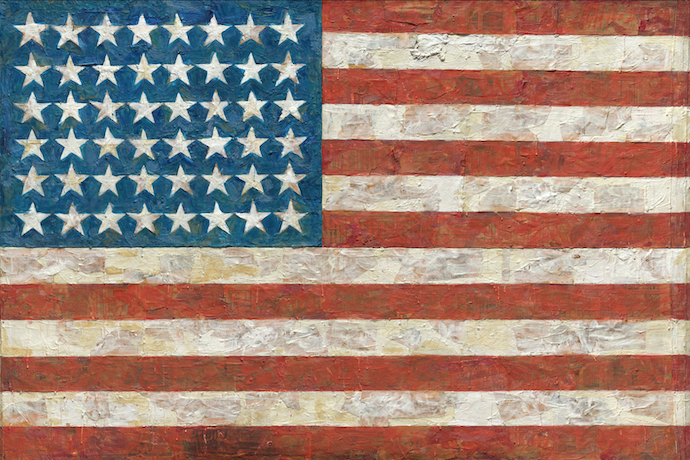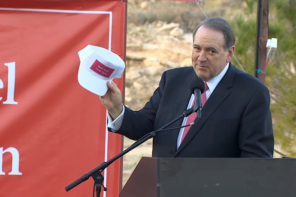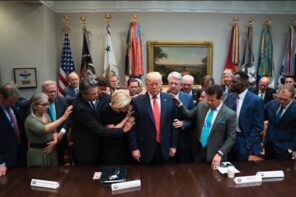On January 16 we celebrate Religious Freedom Day to commemorate what may be the most revolutionary and liberatory idea in the history of civilization. It was the reason many joined the American Revolution. It’s the first freedom in the First Amendment. But despite all this, we as a society have forgotten or taken its power for granted.
Religious freedom was the idea behind legislation in 18th century Virginia that overthrew the tyrannical Anglican Church, which had functioned as an often brutal arm of the British Empire. Historians and the Supreme Court have considered the Virginia Statute for Religious Freedom to be the forerunner to the approach taken by the Framers of the Constitution and of the First Amendment regarding the right relationship between citizens, government, and powerful religious institutions.
Still, as important and transformational as it was in our history, we will probably not hear much about it this Religious Freedom Day—the Day designated by Congress to commemorate it. This may be because most everyone to the left of the Christian Right has taken religious freedom for granted allowing its meaning to fade and knowledge of the underlying principle to atrophy.
But this is a story we need to know—and we owe it to ourselves and to future generations to never forget.
The Virginia Statute was drafted by Thomas Jefferson in the heat of the Revolution in 1777. Evangelical Baptists and Presbyterians, then-persecuted religious minorities in the Virginia colony, saw religious freedom as a reason to throw in with the Revolution and take up arms against the Empire. It may sound almost like a Star Wars tale. But it’s central to our history.
It took a decade before James Madison was able to prevail against the old guard in the legislature to enact the Virginia Statute in 1786; to carry its message to Philadelphia for the Constitutional Convention the following year; and later for it to be included in the First Amendment in 1791.
Commemorative proclamations called for by Congress and issued by presidents annually, have been generally true to the spirit of the occasion. That is, until Donald Trump, who’s used the occasion to promote the Christian Right’s idea that religious freedom allows for ad hoc exemptions from the laws that apply to everyone else.
The Framers knew there’d be days like these. The theocrats and monarchists lost in the 18th century. But they would be back. And that’s essentially who now occupies the White House. What’s more, Christian Right figures who have conflated the idea of religious freedom with their theocratic aims, are influencing if not directing federal policy on matters ranging from access to reproductive health care and LGBTQ rights to foreign policy (notably with regard to Israel and the Middle East).
The Virginia Statute for Religious Freedom, like the Constitution and the First Amendment that followed, was aspirational. Which is to say that they hoped the principle would shape and inform our culture, politics, and law over time. It did, albeit unevenly and slowly. But the principle also allowed for ever greater advances in human and civil rights in the centuries since. But in our darkening moment, a variety of retrograde ideas of second-class citizenship are ascendant.
As I told journalist Paul Rosenberg, writing at Salon last year, the Christian Right, since the signing of the Manhattan Declaration in 2009, “has sought to turn religious freedom into a tool of insult and repression of the religious views and civil rights of others.”
Christian theologian Rebecca Todd Peters, wrote in RD last year that religious freedom belongs to everyone and that we should not cede the religious argument to conservatives:
“… refusing to codify traditionalist, conservative religious beliefs into law isn’t a violation of anyone’s religious freedom. In fact, it not only protects a large majority of people in this country from the tyranny of patriarchy, it actually protects their religious freedom.”
These contemporary views aside—it’s not too late for the bright light of history to illuminate our present enabling us to see the possibility of a better future.
That light, perhaps more than anything else, may be the Framers’ expectation that in the future there would also be people like us—non-theocratic Christians, free thinkers, deists and people of other religions—who would insist on the promise of equality inherent in any reasonable understanding of religious freedom. Now as then we need to know that we are all in this together.
But there’s even more that liberatory leaders of the past expect from us. The late Robert Edgar, a former General Secretary of the National Council of Churches once said, “If he were alive today, Dr. Martin Luther King Jr. would remind us that ‘We are the leaders we have been waiting for.’”
Be the Founders
To reclaim religious freedom and democracy in our time, therefore, we need to not just quote the Founders as our leaders often do so well—we need to be the founders. Whether and how we can rise to the occasion together is the question we face. And as dire as our moment can sometimes seem, as media outlets hype the news of the day—democracy and its institutions are not that far gone. Not yet. As powerful as the theocrats have become, there are still a lot more of us than there are of them.
Religious Freedom Day affords us the opportunity to discuss all this, as we search for fresh and bold ways forward.
To have those discussions, we also need to refresh the language of religious freedom. The truth is that ringing rhetoric in the 18th century can sound clunky today. For example, the key phrase in the Virginia Statute reads: “all men shall be free to profess, and by argument to maintain, their opinions in matters of religion, and that the same shall in no wise diminish, enlarge, or affect their civil capacities.” In addition to replacing “men” with “people,” a 21st century paraphrase might say that we’re free to believe and express ourselves as we will and that our religious or irreligious identity neither advantages nor disadvantages us as citizens.
In that spirit, a remarkable group of national organizations are promoting a model Religious Freedom Day proclamation or resolution for state and local executives and legislators. It seeks to be true to the facts of history and the intentions of the Statute, while remaining unburdened by the many contemporary issues related to religious freedom.
Those promoting the model resolution include BJC (The Baptist Joint Committee on Religious Liberty), and organizations from American Atheists to The Interfaith Alliance and the American Humanist Association—all of which are members of the Blitz Watch Coalition, which was formed to combat the Christian nationalist and Dominionist state legislative campaign called Project Blitz (the story of which was broken right here on Religion Dispatches.)
Versions of the model resolution were introduced last year in the Minnesota State Senate and passed unanimously in Washington DC. This year, Mayor William Peduto of Pittsburgh, Pennsylvania issued a proclamation based on the model, as has Governor Ned Lamont of Connecticut. In Minnesota, State Senator John Marty and Rep. Todd Lippert plan to introduce a Joint Resolution in the House and Senate to permanently commemorate Religious Freedom Day in their state, much in the manner of the federally recognized Day. In a prepared statement Marty said: “As people with deeply-held religious beliefs, we find it offensive that people want government to either promote or attack the religious beliefs of any Americans.”
This effort is partly in answer to bowdlerized Religious Freedom Day resolutions promoted by Project Blitz in state legislatures. These tend to be more acts of religious boosterism than commemorations of the legislative overthrow of the Anglican Church in Virginia or the advance of religious equality under the law. What’s more, in an act of historical erasure, a Religious Freedom Day resolution in the Kentucky State Senate and House failed to even mention the Virginia Statute. Unfortunately, historical erasure is not limited to the theocrats of Project Blitz. Liberal interest groups are sometimes unable to do much better than well-intended message campaigns about “faith” that fail to mention what Religious Freedom Day commemorates, let alone discuss what it means.
This is all the more remarkable because religious freedom has both nothing and everything to do with faith or religion. It is the underlying right to believe as you will—or not—and to change your mind, free from the undue influence of government or powerful religious institutions. It’s a civil or constitutional right, not to be confused with religion in general, or any particular religion at all.
Because all this is so, we need to know in our bones not only what religious freedom is, but also be able to articulate and connect this foundational value to our politics and policy-making in a way that’s second nature. But even as we become the founders, the kinds of leaders everyone from Jefferson to King said we need to be, we must also know that religious freedom understandably makes the rich and powerful nervous. They might prefer that we forget the origin and spirit of an idea so powerful that it has not only helped topple religious and imperial tyrants but has also helped us to advance human and civil rights, and to envision the possibility of democracy for all.
The authors of the First Amendment knew that without the right to think and believe differently than religious, governmental and economic elites—speech could not be free. Nor could there be a free press. That’s why freedom of religion is called the “first freedom.” Without it, democracy itself is impossible.
And that’s why it’s up to the rest of us to not only remember, but to refresh and reclaim religious freedom in our time.





